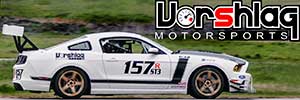Pocono TNiA yesterday. In all fairness these A7's are several years old but I keep them wrapped up and climate controlled during winter. They were still hanging in there. I was all over the left side curbs during session one and kept getting air over the same one. At the beginning of the second session lap two I dove into the fast, sweeping right hand turn 1 and suddenly was going straight off track. Very lucky the tire let go when it did. Wheel may have survived too.
I'm thinking failure from trauma? Pressure was 30 hot before I went out. No warning but I did notice I was pulling to the left before it happened. Anyone else running the A7 see this?

I'm thinking failure from trauma? Pressure was 30 hot before I went out. No warning but I did notice I was pulling to the left before it happened. Anyone else running the A7 see this?















